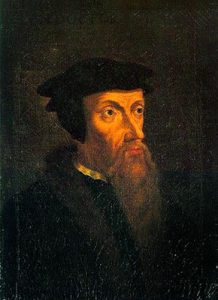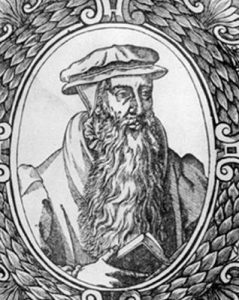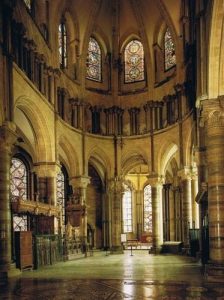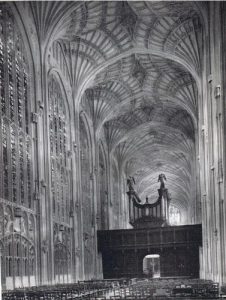The separation from Rome
The king of England Henry VIII wished to repudiate his wife Catherine of Aragon who bore him no son. He asked the pope to nullify his marriage. Catherine was Charles V’s aunt. Pope Clément VII, torn between England and Spain, left the matter hanging. Henry VIII was exasperated and had his marriage nullified by an ecclesiastical court.
When he was excommunicated, Henry VIII’s reaction was the “Act of Supremacy”, passed by the English parliament in 1534, appointing the king as the only head of the Church of England.
Catholicism without a pope
Henry VIII took some innovative measures. Convents were dismantled and their wealth secularised. There was little opposition as the people were scandalised by the extent of church property – a third of the kingdom.
Then, by order of the king, each parish was to own a Bible in English, the New Testament in Tyndale’s translation dated 1526 and the whole Bible in Coverdale’s translation (1535).
Was England heading toward Protestantism ? No, Henry VIII felt strong bonds to Catholicism. In 1539 he wrote “the 6 articles” adopted by the parliament which resolutely condemned Luther’s ideas. Henry VIII founded a Church separate from Rome, without monastic communities, but true to Rome’s doctrine.
The Protestants under Henry VIII
Luther’s ideas were present in the Augustinian convent and the university of Cambridge between 1520 and 1525. The “Cambridge group” was broken up in 1525, and some members exiled.
The Archbishop of Canterbury, Thomas Cranmer, was a scholar appreciative of Luther’s ideas. He went so far as to secretly marry the niece of a Lutheran theologian. He played a minor political role but a major theological role after Henry VIII’s marriage with Catherine of Aragon had been nullified.
Edward VI and the conversion of England to the Reformation
On Henry VIII’s death in 1547, his son Edward VI was only 9. The regency council and the archbishop of Canterbury, Cranmer, opened wide the gates of England to the Reformation.
Reformers swarmed in from the continent. John Knox became Edward VI’s chaplain. Martin Bucer, a reformer from Strasbourg, became a professor at Cambridge university. He convinced Cranmer to embrace the whole of reformed theology.
In 1549 mass was abolished. A new liturgy in English was implemented -namely the « Book of common Prayer », Thomas Cranmer’s masterpiece used in the Anglican church until the XXth century.
A return to Catholicism with Mary Tudor
Mary Tudor, the daughter of Henry VIII and Catherine of Aragon, was a pious catholic. When she was crowned, she restored Catholicism in England under the pope’s authority.
Persecutions of the Protestants began immediately. 300 were burnt alive, amongst whom several bishops, including Thomas Cranmer, archbishop of Canterbury for 20 years. These executions deeply shocked public opinion and Mary Tudor was nicknamed “bloody Mary”.
When she died without an heir in 1558, Elizabeth succeeded her.
Elizabeth I : the establishment of the Anglican Church
Elizabeth was the daughter of Henry VIII and Ann Boleyn. The Protestants brought her to the throne. It is still unknown whether she was a Protestant at heart, but she needed the support of the Protestants to reign.
Elizabeth re-instituted the Supremacy Act, thus asserting her position as queen and sole head of the Church of England.
She appointed new bishops to revise the doctrine of the Church. The result was a text called “39 articles”, adopted as the official text by the Anglicans. The “articles” were derived from Luther, Calvin and Bucer.
Elizabeth, however did not totally break away from the catholic tradition. The service and the organisation of the Church still kept traces of it. Elizabeth set a compromise between Protestant and Catholic components. This accounts for the name often given to
Anglicanism the “middle way”.





